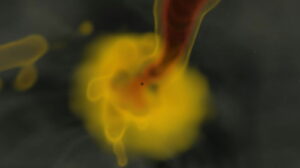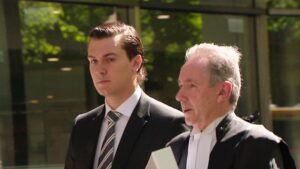
In the world of soap operas, death is often just a temporary setback. Characters presumed dead have a knack for returning to life, much to the surprise and delight of audiences. This phenomenon, while sometimes stretching the limits of believability, is a beloved trope in the genre. From miraculous recoveries to elaborate deceptions, the art of the soap opera resurrection is a testament to the creativity and unpredictability of daytime drama.
The Art of the Comeback
Soap operas have long been known for their dramatic storytelling and unexpected plot twists. One of the most enduring elements of these shows is the resurrection of characters previously thought to be dead. Take, for instance, the case of Cole Howard and Victoria Newman’s baby, Eve. In 1998, Eve was believed to have died shortly after birth. Fast forward 25 years, and it was revealed that she had survived, her mind warped by a kidnapping. Such revelations keep audiences on the edge of their seats, eager to see how the story unfolds.
Similarly, the character of Jason Morgan, known for his stoic demeanor and black T-shirts, was shot dead in 2012, only to return with a new face. This twist was later explained by the introduction of his twin brother, Drew Cain. The real Jason eventually returned in 2017, only to be caught in a tunnel collapse. His survival and subsequent return in 2024 exemplify the resilience of soap opera characters.
Science Fiction Meets Daytime Drama
The blending of science fiction elements with traditional soap opera storytelling has allowed for even more creative resurrections. In the case of Stefan from “Days of Our Lives,” his heart was transplanted, yet he was kept alive with a fake heart until a new one became available. This kind of plot device allows writers to explore the boundaries of reality within the fictional world.
Hope Brady’s love story further illustrates this point. Her true love was believed to have died from an inoperable brain tumor, only to be resurrected years later by the inventive DiMera family. Such storylines demonstrate the soap opera’s ability to merge melodrama with imaginative science fiction elements.
Deceptions and Disguises
Deception plays a crucial role in many soap opera resurrections. Characters often fake their own deaths for various reasons, from escaping danger to seeking revenge. For instance, the character of Nikolas Cassadine faked his death twice in 2019, first by falling from a window and then by being shot. These fake deaths add layers of intrigue and suspense to the narrative.
Similarly, the character of Julian Jerome was believed to have died after a bridge collapse, only to be living a new life under a different identity. Such twists keep viewers guessing and ensure that the storyline remains fresh and engaging.
Implications and Audience Reactions
The frequent use of resurrections in soap operas has significant implications for both the narrative and the audience. On one hand, it allows for the continuation of beloved characters and storylines. On the other, it can challenge the suspension of disbelief required to fully engage with the story.
According to television critic Emily Nussbaum, “Soap operas thrive on the unexpected, and the resurrection trope is a perfect example of this. It keeps viewers invested and allows for endless storytelling possibilities.”
While some may criticize the trope as unrealistic, it is precisely this unpredictability that has kept soap operas popular for decades. The genre’s willingness to push boundaries and explore new narrative possibilities is a testament to its enduring appeal.
As soap operas continue to evolve, the resurrection trope will likely remain a staple of the genre. Whether through miraculous recoveries, science fiction twists, or elaborate deceptions, the return of the “dead” will continue to captivate audiences and keep them tuning in for more.





